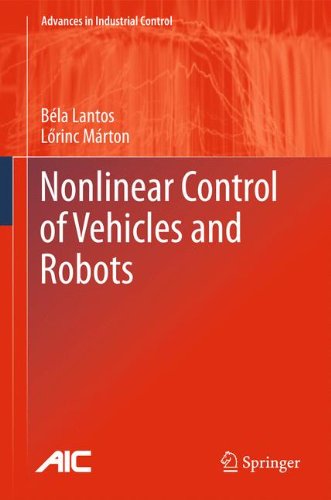

Most ebook files are in PDF format, so you can easily read them using various software such as Foxit Reader or directly on the Google Chrome browser.
Some ebook files are released by publishers in other formats such as .awz, .mobi, .epub, .fb2, etc. You may need to install specific software to read these formats on mobile/PC, such as Calibre.
Please read the tutorial at this link: https://ebookbell.com/faq
We offer FREE conversion to the popular formats you request; however, this may take some time. Therefore, right after payment, please email us, and we will try to provide the service as quickly as possible.
For some exceptional file formats or broken links (if any), please refrain from opening any disputes. Instead, email us first, and we will try to assist within a maximum of 6 hours.
EbookBell Team

4.0
56 reviewsTracking of autonomous vehicles and the high-precision positioning of robotic manipulators require advanced modeling techniques and control algorithms. Controller design should take into account any model nonlinearities.
Nonlinear Control of Vehicles and Robots develops a unified approach to the dynamic modeling of robots in terrestrial, aerial and marine environments. To begin with, the main classes of nonlinear systems and stability methods are summarized. Basic nonlinear control methods useful in manipulator and vehicle control – linearization, backstepping, sliding-mode and receding-horizon control – are presented. Formation control of ground robots and ships is discussed.
The second part of the book deals with the modeling and control of robotic systems in the presence of non-smooth nonlinearities including analysis of their influence on the performance of motion control systems. Robust adaptive tracking control of robotic systems with unknown payload and friction in the presence of uncertainties is treated.
Theoretical (guaranteed stability, guaranteed tracking precision, boundedness of all signals in the control loop) and practical (implementability) aspects of the control algorithms under discussion are detailed. Examples are included throughout the book allowing the reader to apply the control and modeling techniques in their own research and development work. Some of these examples demonstrate state estimation based on the use of advanced sensors such as Inertial Measurement System, Global Positioning System and vision systems as part of the control system.
Nonlinear Control of Vehicles and Robots will interest academic researchers studying the control of robots and industrial research and development engineers and graduate students wishing to become familiar with modern control algorithms and modeling techniques for the most common mechatronics systems: vehicles and robot manipulators.